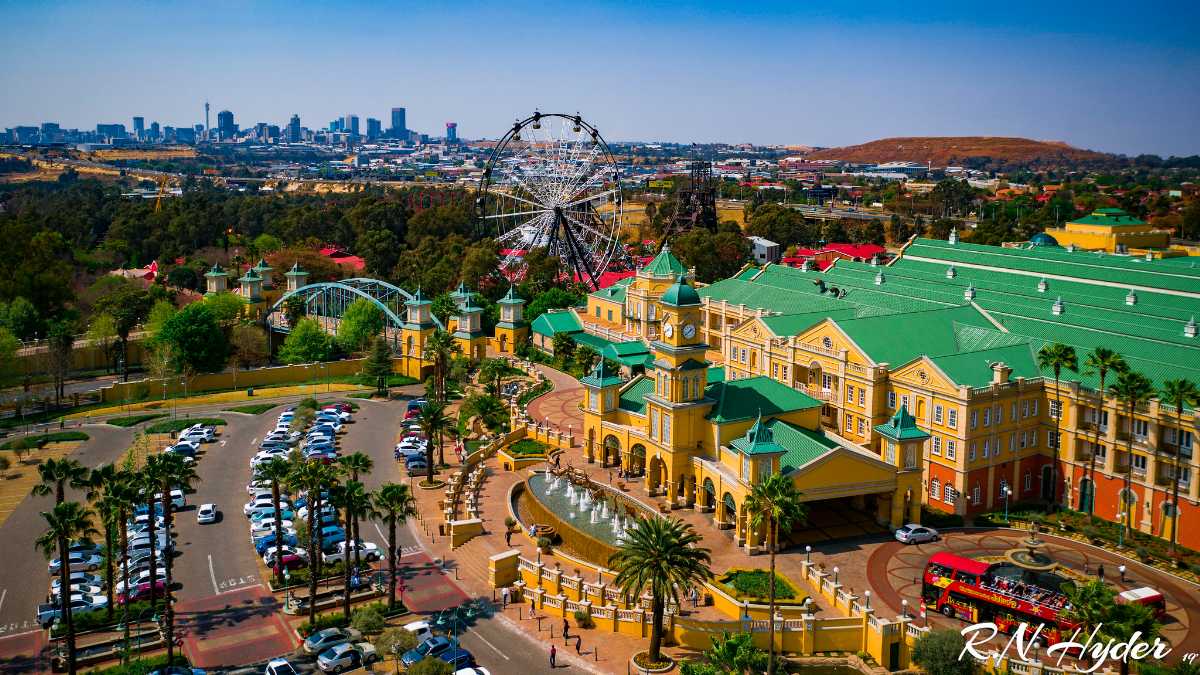Our Johannesburg North Attractions Diaries
Our Johannesburg North Attractions Diaries
Blog Article
The Ultimate Guide To Johannesburg North Attractions
Table of ContentsThe 6-Minute Rule for Johannesburg North Attractions9 Simple Techniques For Johannesburg North AttractionsThe Facts About Johannesburg North Attractions UncoveredNot known Facts About Johannesburg North AttractionsNot known Details About Johannesburg North Attractions Things about Johannesburg North AttractionsThe Only Guide for Johannesburg North Attractions
You must keep safety and security in mind and travelers have to stay alert at all times when in unfamiliar surroundings. Speak with the residents when you are in community to discover the location you are remaining in. Johannesburg North attractions. When on the road (this doesn't relate to shopping center and various other secure atmospheres) best basic suggestions is to try your ideal to look like a local and to avoid presenting any kind of kind of wealth
What Does Johannesburg North Attractions Mean?
Professor Revil Mason O. J. (Thomson, 1946) discovered the Witwatersrand's pre-colonial history. His archaeological job blew up the 'em pty land' misconception, according to which the area was devoid of human habitation before the arrival of European settlers. In his publications Prehistory of the Transvaal: A Document of Human Task (1962) and Beginnings of Black People of Johannesburg and the Southern Western Central Transvaal AD 3501880 (1986 ), Professor Mason demonstrated the level of social and financial advancement in the location before Europeans set foot here.

An Unbiased View of Johannesburg North Attractions
In 1878, David Wardrop found gold in quartz capillaries at Zwartkop, north of Krugersdorp. In 1881, Stephanus Minnaar came across gold on the farm Kromdraai, near the Cradle of Humankind.
In March 1886, a protrusion (quickly to be called the Key Reef) was discovered, fairly fortuitously, on Gerhardus Oosthuizen's ranch Langlaagte. Some claim that the Lancastrian coal miner George Walker found this coral reef. One more travelling English miner, George Harrison (that had formerly operated in Australian mines) acquired a prospecting licence in respect of Langlaagte in May 1886.
He made a decision to proceed in a quest for greener fields, and disposed of his Langlaagte case for the baronial amount of 10. Alas: below lay the wealthiest goldfield ever found. The discovery of this abundant auriferous coral reef provoked a gold published here rush that signalled the end of bucolic tranquillity in the southerly Transvaal.
It would, within 6 years, become the biggest town in southerly Africa. Within a decade, it would certainly make the Z. A. R. until after that an anarchical and bankrupt little state the wealthiest country in Africa. By the turn of the century, the Z. A. R. was to exceed Russia, Australia and the USA of America to come to be the globe's leading gold manufacturer, generating greater than a quarter of the globe's gold.
The Definitive Guide for Johannesburg North Attractions
It was called Ferreira's Camp, named after Colonel Ignatius Ferreira. He was a Boer traveler upon whom the British authorities had actually presented the standing of Friend of one of the most Distinguished Order of St Michael and St George (entitling him to the post-nominal letters C. M. G.) in gratitude for his role in the battle that had deposed the Pedi king Sekhukhune in 1879.
2 other camps were established: Meyer's Camp on the farm Doornfontein, and Paarl Camp. The latter was nicknamed Afrikander Camp; lots of individuals from the Cape Colony resolved there.

Some Known Details About Johannesburg North Attractions
This name got currency by word of mouth, such that the State Secretary affirmed the name to the Mining Commissioner on 9 October 1886. Stands in the village were auctioned on 8 December 1886. While some stands were cost 10, others were torn down for just sixpence.
Two years later, these erven were to change hands for as long as 750 each. The tented camps diminished as a dorp of corrugated iron buildings developed and increased north of the mines situated along the Main Coral Reef Roadway. Locations such as find more information Jeppe's Town (where working-class immigrants erected their houses) and Doornfontein (where the affluent new 'Randlords' began to create their luxurious homes) were soon included in the ever-expanding map of the town.
A Biased View of Johannesburg North Attractions
Apart from the road names, there were no signs of Johannesburg being located in a Dutch-speaking nation., virtually everybody spoke English and also the Federal government slaves addressed one in look at more info English, unless they were first attended to in the Taal (or Low Dutch)'.
As such, Britain had an interest in ensuring optimum problems for gold production on the Witwatersrand, and that the gold was exported to London instead of Berlin an imperative rendered all the a lot more clamant by the Z. A. R - Johannesburg North attractions.'s raising toenadering with Germany. Mine proprietors were on a clash with President Kruger, whose plan of monopolistic concessions (frequently given to his cronies) prevented mining firms from procuring supplies of materials (especially dynamite) and work on their very own, less expensive terms
Unknown Facts About Johannesburg North Attractions
In 1890, the Volksraad had actually limited the franchise to white males who had actually resided in the Z. A. R. for fourteen years or longer, thus disqualifying many of the immigrants (who happened to be the significant factors to the fiscus). Agitation for the vote was a simple pretext for advertising a various schedule; most uitlanders regarded themselves as short-lived visitors and had no intention of remaining in the Z.
Report this page